Every person is on a journey one that’s deeply personal, complex, and ever-evolving. It’s not a journey marked by miles or monuments, but by moments of clarity, confusion, transformation, and growth. This is the identity journey, and it’s one of the most important paths we walk in life.
What Is an Identity Journey?
An identity journey is the process of discovering, understanding, and embracing who we are our values, beliefs, passions, fears, strengths, culture, gender, purpose, and place in the world. It’s not a straight path, nor does it end at a certain age. Our identity is shaped by the experiences we live through, the people we encounter, and the challenges we overcome.
This journey often begins in childhood, accelerates in adolescence, deepens in adulthood, and continues throughout life. Each stage brings new questions:
- Who am I beyond what others expect of me?
- What do I believe in?
- Where do I belong?
- How do my culture, gender, and background shape me?
- Can I redefine myself if I grow or change?
These questions don’t always have quick answers but asking them is where the journey truly begins.
Phases of the Identity Journey
While everyone’s journey is unique, many people experience similar stages:
1. Early Identity Formation (Childhood & Adolescence)
This stage is all about absorbing. We take in values from parents, teachers, media, and society. We may imitate others to fit in, or begin to ask small questions about what makes us “us.”
1. “The Mirror in Grandma’s Attic” A Story About Self-Worth and Body Image
Character: Alina, Age 12

Alina had always felt out of place. While her friends were petite and wore matching shoes with glitter, Alina stood tall too tall, she thought. Her long legs made her trip sometimes, and her broad shoulders made her feel like a grown-up trapped in a sixth-grader’s body. Whenever it was time to take a class photo, she was always at the back, towering over everyone like a tree in a flower garden.
At school, the other kids weren’t always kind. Some boys called her “Stretch” or “Giraffe Girl” and giggled behind her back. Even her best friend, Lila, once said, “I wish I had your height for basketball, but for, like, anything else… I wouldn’t want it.” Alina began to wear oversized hoodies and slouched as much as she could. She avoided mirrors. She felt like she was too much for the camera, for the classroom, and sometimes, for herself.
One summer, Alina was sent to stay with her grandmother in a quiet, sleepy village while her parents traveled for work. Her grandmother’s home was old and full of antique furniture, dusty books, and a strange sense of calm that made Alina feel like time moved slower there.
One rainy afternoon, Alina climbed into the attic, looking for something to do. That’s when she found it an old, tall mirror leaning against a cracked wooden wall, draped in a sheet. She pulled the cloth off and looked away quickly. She didn’t want to see herself.
Her grandmother had followed her up with tea and noticed.
“You found the mirror,” Grandma smiled. “That belonged to my mother. It has seen generations of tall, proud women.”
“I’m not proud of how I look,” Alina muttered, not meeting her eyes.
Her grandmother sat beside her and held her hand gently. “Alina, when I was your age, I hated my height too. Boys were afraid of dancing with me. I was always asked to stand in the back. But later, I learned to stand tall. Literally and emotionally.”
She guided Alina to stand before the mirror. “Look,” she whispered. “Look beyond what you think is wrong.”
For the first time in months, Alina looked at her full reflection. She still saw her long legs and broad shoulders, but now she also noticed the spark in her eyes, the confidence hiding beneath her hunched frame.
Over that summer, Grandma helped her learn to walk tall, speak with clarity, and even run really run. They went hiking in the hills, took yoga classes, and started mornings with stretches. Grandma told her stories of women in their family who were leaders, healers, teachers strong in spirit and body.
When school began again, Alina walked in differently. Her hoodie was still there, but her shoulders were upright. She joined track and field. She even volunteered to help with the school play’s costume design. That mirror in Grandma’s attic had shown her something no one else did her strength was never the problem. It was her perspective.
2. “The Language of Silence” A Story About Cultural Identity
Character: Omar, Age 10
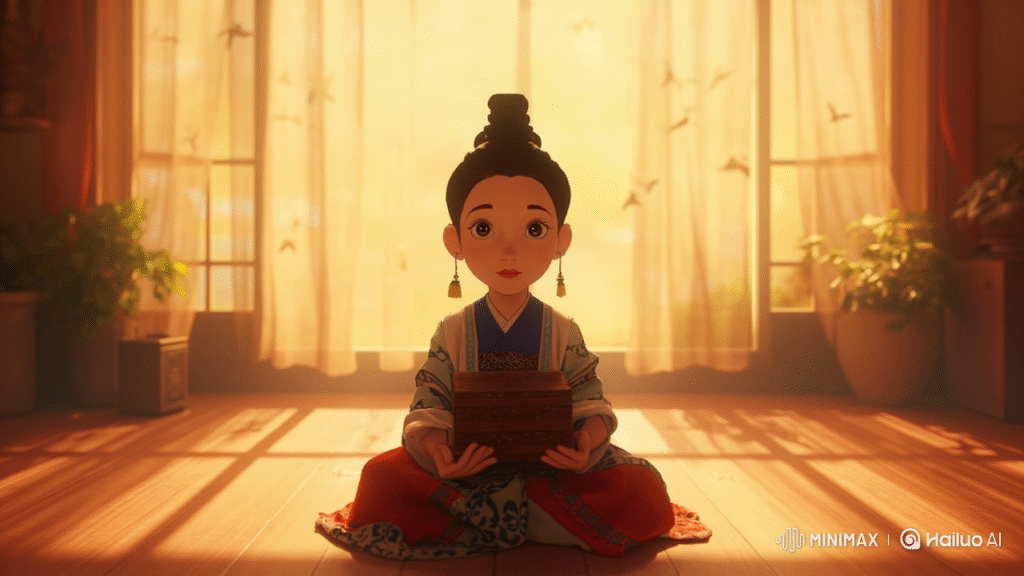
Omar lived in two different worlds.
At home, his world was filled with the scent of cumin and cardamom, Urdu lullabies from his mother, and stories about his grandfather’s poetry read aloud by his father. His home echoed with culture, color, and the warmth of heritage.
But at school, Omar was silent about all of that.
In his fourth-grade classroom, he spoke only English, refused to bring traditional food for lunch, and never invited friends over. He felt like he had to choose between blending in and standing out. And he always chose silence.
He didn’t want to be teased. A kid named Tyler once said his name sounded “weird.” Someone else asked, “Why does your mom wear that scarf on her head?” It was easier not to explain, not to correct, not to share.
One day, his teacher, Mr. Walton, announced a project: “Cultural Day.” Everyone had to prepare a five-minute presentation about their family’s background.
Omar panicked.
He told his mom he wanted to talk about Canada instead. But she gently insisted, “Beta, you don’t need to hide who you are. Your story is beautiful.”
They sat together and created a presentation: photos of Pakistan, clips of Urdu poetry, a sample of his mother’s homemade kheer (a sweet rice pudding), and a hand-written page by Omar in both English and Urdu.
When the day came, Omar’s heart raced. He almost faked being sick. But when he stood in front of the class and began his presentation, something magical happened.
His classmates were silent but not out of boredom. They were listening.
When he wrote their names in Urdu, eyes lit up. One girl asked, “Can you teach me to write my name?” Another boy said, “That dessert was amazing.”
At recess, Omar found himself surrounded by curious questions: “What’s Urdu like?” “Can we see more poems?” “Can I come over sometime?”
That day, Omar felt a shift.
For the first time, he realized he didn’t have to hide parts of himself to belong. His identity wasn’t a secret to protect it was a gift to share.
3. “The Jersey That Didn’t Fit” A Story About Gender Identity
Character: Max (they/them), Age 13

Max had always felt… in-between.
They liked soccer, but not the girls’ team uniform. They liked baggy shirts, soft denim jackets, and wearing their older brother’s snapbacks. But every time someone called them “young lady” or “miss,” they cringed.
At school, Max avoided the locker rooms. They pretended not to hear the giggles when they chose a different seat. Their body didn’t feel wrong but the way people labeled it did. It was as if the world kept putting stickers on Max that said “Girl,” and Max wanted to peel them all off.
The final straw came at the start of soccer season. The coach handed Max a pink-jersey uniform tight-fitting and short-sleeved. Max hesitated.
“Coach, can I… wear the boys’ jersey instead?”
The room fell silent.
Coach blinked, clearly confused. “Why, Max? You’re on the girls’ team.”
“I don’t feel right in this one,” Max said quietly.
After a pause, Coach nodded. “I’ll talk to the principal.”
That week was hard. Whispers followed Max in the hallways. A few kids said mean things. But others were curious. Some friends asked respectful questions, and Max explained carefully that they were nonbinary.
It wasn’t easy. But it was real.
By mid-season, Max had the boys’ jersey and a new sense of confidence. They spoke at the school’s diversity assembly, sharing their story.
After the talk, a younger student quietly walked up to Max and said, “I feel like that sometimes too. But I never knew what to call it.”
Max smiled. “You don’t have to have it all figured out. But you don’t have to hide, either.”
4. “The Spelling Bee Breakdown” A Story About Living Up to Expectations
Character: Ravi, Age 11

Ravi was known as “the smart one.”
Every family gathering, his relatives would brag about his report cards. At school, teachers expected him to know all the answers. Ravi worked hard but sometimes, he felt like he wasn’t working for himself. He was working to maintain an image.
When he was selected for the national spelling bee, the pressure mounted. His father printed out word lists. His mother made flashcards. He studied every night. Everyone told him he would win.
On the big day, Ravi stood under bright stage lights, holding a small card in shaking hands. The crowd was silent. The judge spoke:
“Your word is: ‘flibbertigibbet.’”
Ravi froze. He had never heard it before.
He stammered, guessed and got it wrong.
A buzzer sounded. He was disqualified.
Backstage, Ravi burst into tears. “I failed you,” he told his parents.
His mother knelt beside him. “No, beta. You tried your best. That’s all we ever wanted.”
“But I’m supposed to be the smart one,” he cried.
His father gently replied, “You’re also funny. Kind. Thoughtful. That’s what matters more.”
That night, Ravi sat by his window, thinking. He realized he didn’t have to be a trophy. He started journaling not just about spelling, but about how he felt, what he loved, and who he wanted to become.
And for the first time, Ravi felt like he was discovering who he was not for others, but for himself.
5. “Painting Outside the Lines” A Story About Individuality and Creativity
Character: Mei, Age 9

Mei saw the world differently. Where others saw a green tree, she saw a tree made of stars. Where others drew apples in red, she painted them silver.
In school, her art teacher, Mrs. Trent, didn’t understand her creativity. “Follow the assignment,” she often said. “Color inside the lines.” Mei tried but it felt wrong.
One day, when asked to draw “a typical house,” Mei created a painting of a house made of clouds, with bookshelves floating in space and a galaxy kitchen. Mrs. Trent frowned. “This isn’t what I asked for.”
The class laughed.
That night, Mei felt crushed. “Maybe I’m just weird,” she told her mom.
But her mom smiled. “Or maybe you’re an artist.”
She enrolled Mei in a weekend art class at the community center, where creativity was celebrated. There, Mei met other kids who drew wild things cities made of candy, dragons made of flowers. Her heart opened.
Months later, the school hosted an open art exhibit. Mei submitted a large canvas titled, “My Brain When I’m Happy.” It was chaotic, bright, strange and beautiful.
Mrs. Trent walked by, saying nothing.
But a group of younger students stared at it in awe. One whispered, “I want to paint like her.”
Mei smiled. Because she finally understood: she wasn’t coloring outside the lines. She was redrawing them.
2. Exploration (Teens to 20s)
We start experimenting with different identities trying new hobbies, exploring sexuality or gender, testing boundaries, or questioning beliefs. It’s a time of self-discovery and rebellion. While it may be confusing, this phase is essential.
1. “The Playlist That Changed Everything” A Story About Sexual Identity
Character: Jordan, Age 17
Theme: Discovering and accepting sexual orientation

Jordan had always loved music. It was his escape. His earbuds were his shield at school, at home, even at dinner when conversations got tense. But he realized something was shifting in him when he began to relate more to the love songs sung by male singers about other men.
He tried to ignore it at first. He fast-forwarded through lyrics that made his heart flutter. He even deleted songs from his playlist songs that made him feel too seen.
At school, everyone assumed Jordan was straight. He had dated a girl once, briefly. It felt safe. Predictable. But not honest.
One night, while scrolling through a friend’s Instagram story, he found a song that made his chest ache with recognition. It was a soft ballad about two boys falling in love, unsure and scared. He played it on repeat. Then he added it to a private playlist called “The Real Me.”
That playlist became his secret journal. Through music, he explored feelings he didn’t yet have the courage to name aloud. He cried. He smiled. He danced in the dark.
One evening, during a long drive with his older sister, the playlist accidentally started playing over Bluetooth. Jordan froze.
His sister said nothing for a while. Then she asked, softly, “Is this about you?”
Jordan nodded, barely.
“I love this song,” she said. “And I love you. Just the same.”
That was the first time Jordan felt the weight of secrecy begin to lift. His identity was still unfolding, but now it had a voice and a song.
2. “The Art of Becoming No One” A Story About Social Identity and Reinvention
Character: Layla, Age 19
Theme: Escaping the labels of the past to rediscover self
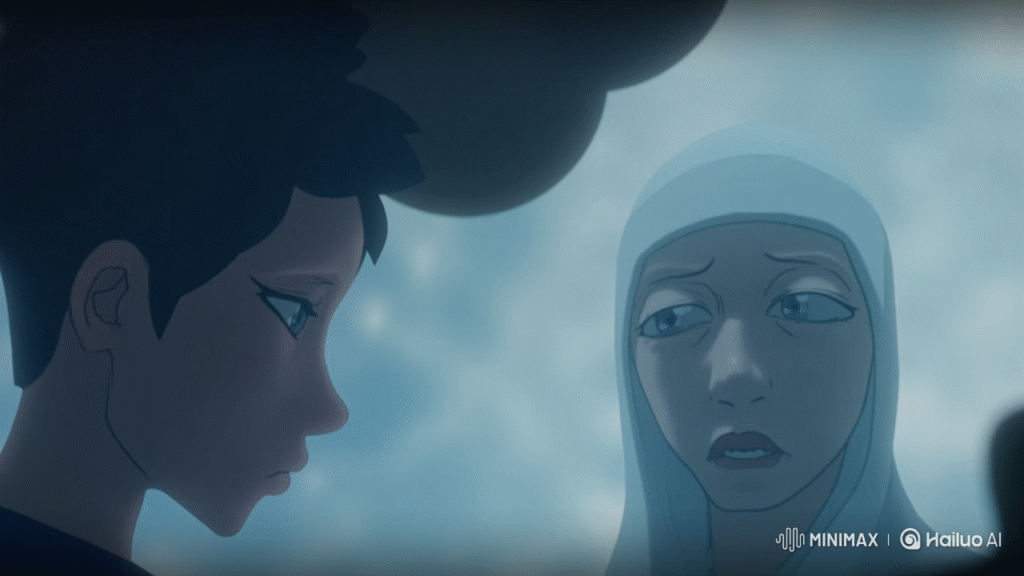
Layla had spent her entire high school life being “the golden girl.” Student council president, debate team captain, straight A’s, always in perfect makeup. She wore approval like a crown.
But when she got into university two states away, she decided to do something radical: start over. No one there knew her. No one had expectations.
For the first time, she skipped makeup, wore baggy jeans, and dyed her hair turquoise. People began calling her “mysterious” and “artsy” and strangely, it felt good.
She joined the campus art club, even though she’d never held a brush seriously. She painted not for grades or praise, but because it made her feel alive. She stopped checking her GPA obsessively. She walked barefoot in the grass. She even tried slam poetry.
But as the semester passed, a quiet identity crisis brewed. If she wasn’t the overachiever, who was she?
One night after an art exhibit, she sat by the campus lake, thinking. A fellow student sat next to her and asked, “Do you miss who you used to be?”
“I don’t know who I used to be,” Layla whispered. “I just knew how to perform.”
He smiled. “Maybe you’re not losing yourself. Maybe you’re finally meeting yourself.”
That night, Layla started journaling honestly for the first time not as “Layla the Leader” or “Layla the Rebel,” but as Layla the human being, still learning to be whole without titles.
3. “Ashes and Acceptance” A Story About Religion and Personal Faith
Character: Sameer, Age 21
Theme: Questioning and reshaping religious beliefs
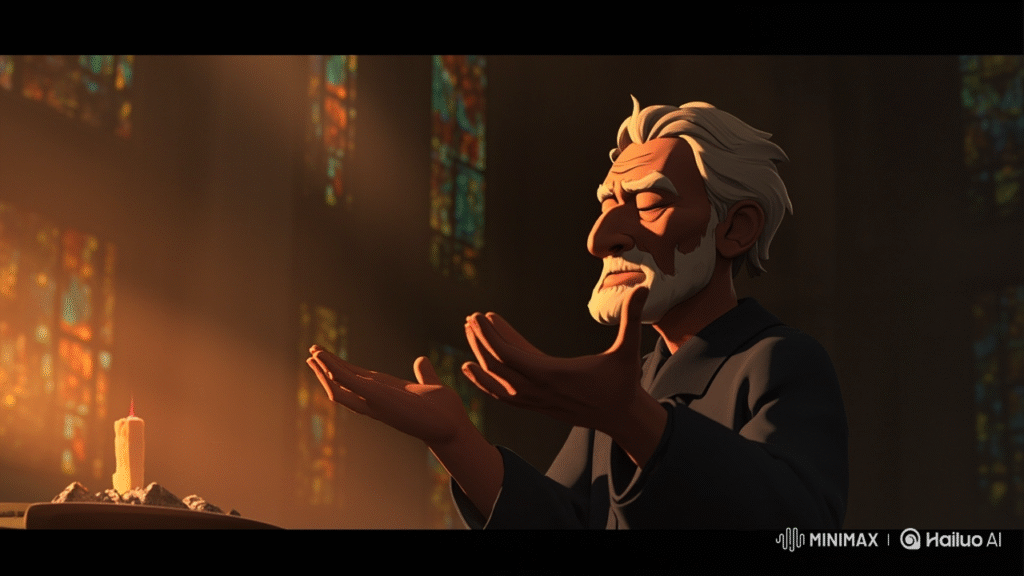
Sameer grew up in a devout household. Prayers five times a day. Fasting during Ramadan. No dating, no alcohol, no questions.
In high school, he followed the rules, mostly out of respect. But in college, things shifted. He was exposed to new ideas, friends from different faiths, and a philosophy course that left his worldview trembling.
He began to question: Why do I believe this? Do I really believe this? Or am I just afraid not to?
At first, he kept his doubts secret. He continued to pray, but the words felt like echoes. He fasted, but he felt numb. One night, after a heated debate in class about religion, Sameer skipped prayer for the first time in his life. And then another.
He felt lost. Guilty. Free. Confused.
When he went home for break, he feared what his parents would think. But one evening, while helping his mother in the kitchen, he whispered, “Ammi… what if faith looks different for me?”
She paused, then said gently, “Sameer, your grandfather prayed differently from your father. Your father prayed differently from me. Faith is a journey. It changes with the walker.”
That moment shifted everything. Sameer realized he didn’t have to throw away his entire belief system he could rebuild it, brick by brick, with both heart and reason.
His faith didn’t disappear. It matured. And so did he.
4. “Behind the Camera” A Story About Passion vs. Expectations
Character: Reema, Age 18
Theme: Choosing purpose over pressure
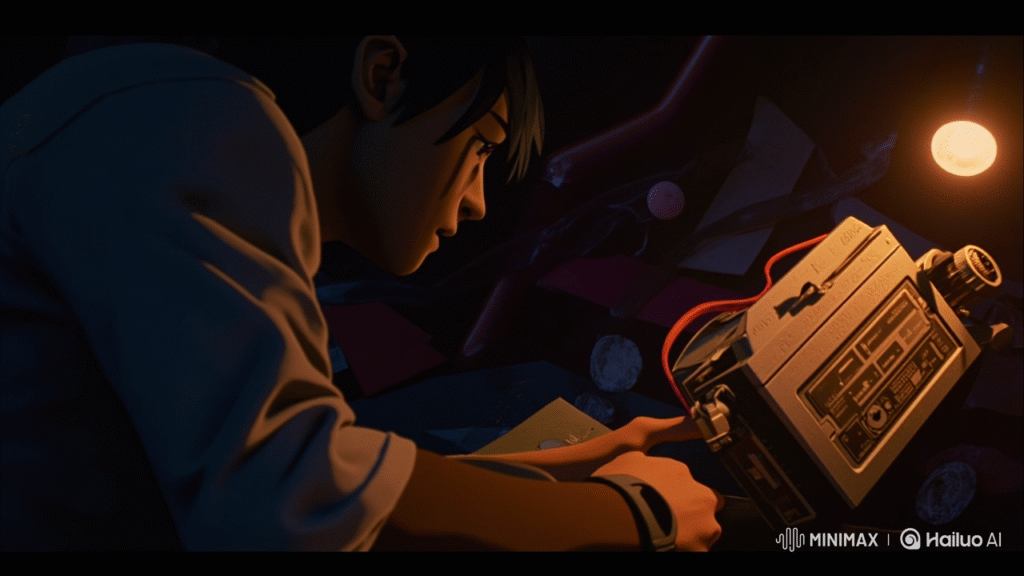
Reema was supposed to be a doctor. At least, that’s what her parents had planned since the day she got her first toy stethoscope. She was smart, disciplined, and came from a long line of healthcare workers.
But Reema loved stories. She loved films. And she really loved cameras.
She started making short videos for her school’s media club just for fun at first. But slowly, a spark ignited. She stayed up nights learning editing software. She took photos of strangers on the street and edited them into small photo essays. Every time she created something visual, she felt seen.
When it came time for college applications, Reema submitted her pre-med forms… and one film school application. A bold, secret rebellion.
To her surprise and terror she got into film school. She didn’t tell her parents right away.
When she finally did, her father was furious. “Do you know how hard we worked for you to have this opportunity? You’re throwing it away.”
Reema cried. But she didn’t back down. “I want to heal people too but with stories.”
Weeks of silence followed. Then one day, her mother came into her room, sat down, and asked, “Can I see your film?”
They watched it together no words. Just emotion.
After it ended, her mother said, “You have a gift. If this is your truth, chase it.”
Reema left for film school that fall. She still had doubts but for the first time, she was chasing her own dream, not someone else’s.
5. “The Name I Chose” A Story About Gender Identity and Ownership
Character: Eli (he/him), Age 20
Theme: Embracing a chosen identity
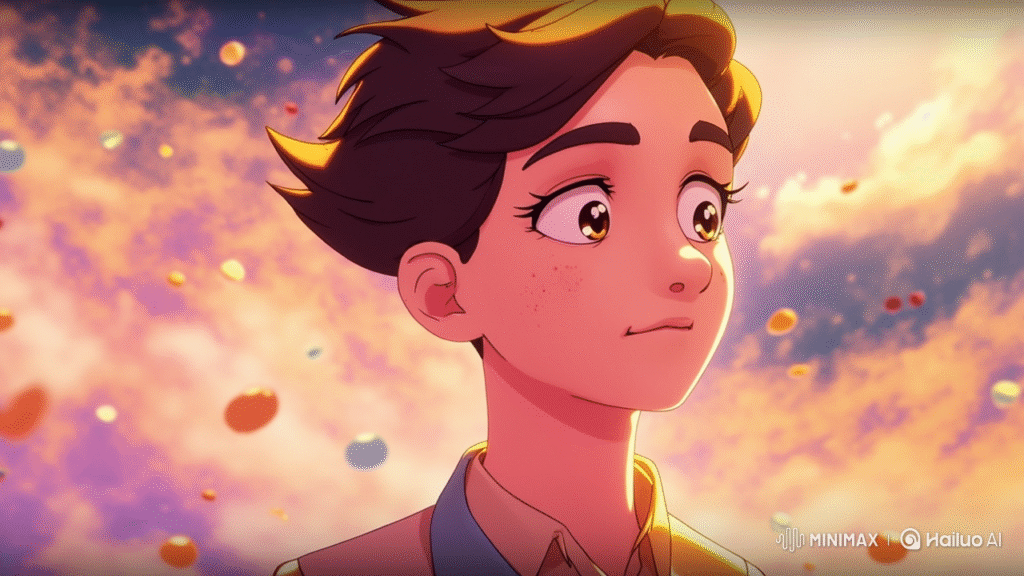
Eli wasn’t the name he was born with.
He’d spent the first 18 years of life being called by a name that didn’t feel right, responding to pronouns that scratched against his skin like sandpaper. He played along for years. Smiled in dresses. Answered to “she.” But inside, he was screaming.
In college, things changed. He met people who introduced themselves with their pronouns. Some were trans. Some nonbinary. Some questioning. And suddenly, the impossible felt possible.
He began to test it. In his dorm, he asked friends to call him Eli. At first, just as a nickname. Then, more seriously.
Each time someone said “he,” he felt his chest swell not with fear, but with peace.
Changing his name legally was hard. Talking to his family was harder. His mother cried. His father asked if it was just a phase.
But Eli held firm. “I’m not becoming someone else. I’m becoming me.”
It took time. Therapy. Distance. But eventually, his parents began to try. His mother slipped up often but always corrected herself. His father didn’t say much, but gave him a notebook that read: “For Eli’s thoughts.”
Now, when Eli looked at his student ID, it had his name. His real name. The one he chose. The one that fit.
His identity wasn’t just an idea anymore it was a reality, written in bold letters and lived out loud.
3. Crisis & Reflection (Any Age)
Sometimes life throws challenges that shake our sense of self: a breakup, loss, failure, moving to a new place, or a mental health struggle. These crises force us to reflect Who am I now? They can lead to great growth.
1. “The Glass Shards of Victory” A Story About Burnout and Rediscovery
Character: Aanya, Age 24
Theme: When success becomes a cage

Aanya had done everything “right.”
Top of her class, scholarship to an Ivy League university, and now working as an associate at a prestigious law firm. From the outside, she was the definition of achievement. Her LinkedIn was filled with endorsements. Her family proudly introduced her as “our star.”
But inside, she was breaking.
She worked 70 hours a week, ate at her desk, and hadn’t seen her college friends in over a year. Her dreams of making a difference had been replaced by paperwork, late-night emails, and staring at blinking cursors.
One night, after a 14-hour day, she walked past a shop and saw her reflection in the glass shoulders hunched, eyes empty, phone still in hand. She stopped. It didn’t even look like her.
That weekend, she sat on the floor of her apartment, surrounded by open notebooks and memories of poems she used to write. Aanya had loved words once not for arguments or courtrooms, but for beauty, rhythm, and truth.
She wept. Then she wrote. One line. Then another.
Eventually, she didn’t quit law, but she shifted. She joined a non-profit legal aid group. Her paycheck shrank, but her soul began to breathe again.
In that reflection, she had seen not failure but the version of herself she forgot she missed.
2. “When the Wedding Was Cancelled” A Story About Facing Fear of Starting Over
Character: Matteo, Age 29
Theme: Breaking free from expectations and roles

Matteo had been with Jenna for seven years. Their wedding was planned down to the napkin design. The invitations had been sent. The honeymoon booked. Their families were thrilled.
But Matteo felt trapped.
Not because Jenna wasn’t kind. She was. Not because they argued. They didn’t. But something inside him whispered constantly: This isn’t right.
He ignored it until the morning of his bachelor party, when his best friend asked, “Are you happy, or just doing what’s expected?”
That night, Matteo stared at the ceiling, the question echoing. At sunrise, he called Jenna. With trembling words, he said, “I don’t think I can do this.”
The silence that followed was unbearable. The wedding was called off. Families were furious. Friends were confused. Matteo felt like a disgrace.
For weeks, he isolated. Guilt clawed at him. But underneath that, something else grew: relief.
He began journaling, then traveling backpacking through South America, volunteering at shelters, sleeping under stars. He met people whose lives looked nothing like the one he’d planned and yet, they were fulfilled.
Matteo wasn’t running anymore. He was searching.
Years later, he looked back at that cancelled wedding not as a failure but as the day he finally said “yes” to himself.
3. “My Father’s Silence” A Story About Intergenerational Identity Crisis
Character: Elena, Age 32
Theme: Navigating cultural gaps and family expectations
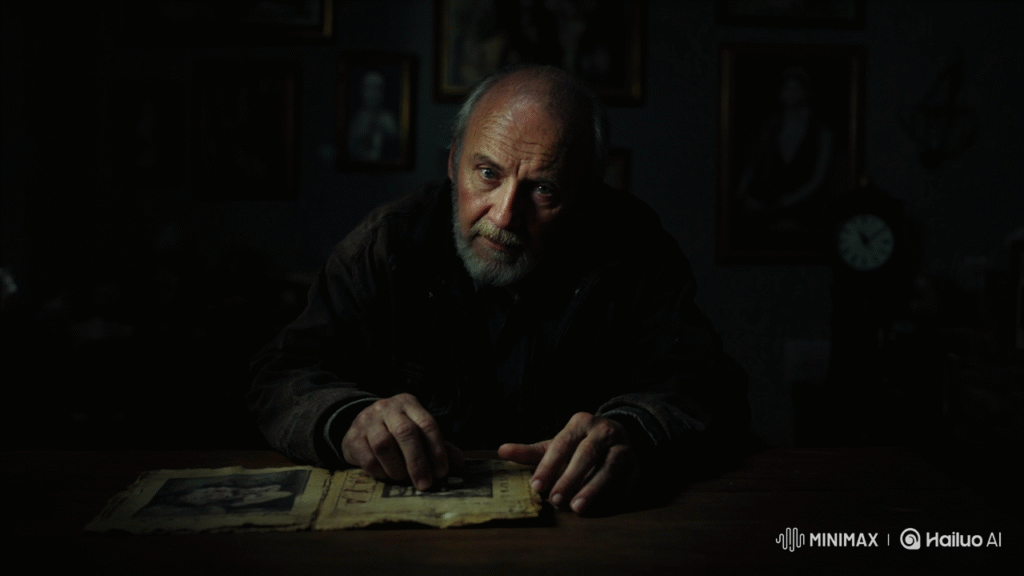
Elena had always felt like she lived in two worlds.
Born in the U.S. to Mexican immigrants, she was fluent in both English and Spanish but only used Spanish at home. Her father, a proud, quiet man who had worked two jobs his entire life, expected her to become “someone important” a doctor, a lawyer, an engineer.
But Elena had studied sociology. She wanted to work in community development, telling stories of migration and advocating for immigrants like her parents.
Her father didn’t understand. “You want to get paid to talk?” he asked once, genuinely confused.
For years, she tried to please both him and herself. She worked a marketing job that paid the bills but left her unfulfilled. Then, one day, a community center offered her a position half the salary, but everything she’d ever wanted.
She couldn’t decide.
That weekend, she visited her parents. After dinner, she told her father quietly, “I got a job offer… but it’s not what you’d want.”
He didn’t speak. Just sipped his tea.
But the next morning, he handed her an old, worn wallet. Inside was a folded photo of him and Elena, aged 6, standing in front of a library.
“You always loved books,” he said. “Do what makes you… you.”
That moment healed something ancient between them. Elena took the job.
Her father still didn’t say much but from then on, every time she came home, he asked, “Whose story did you tell this week?”
4. “The Diagnosis” A Story About Identity and Illness
Character: Caleb, Age 27
Theme: Redefining identity after chronic illness

Caleb was a marathon runner. That’s how everyone knew him. At work, in his friend group, in his family he was the one who ran. It defined him.
Until the day he couldn’t get out of bed.
What started as fatigue spiraled into confusion, dizziness, and pain. After months of tests and disbelief, he was diagnosed with an autoimmune disease. His muscles weakened. His routine shattered.
For months, he battled depression. Who was he without running? Without medals? Without energy?
He avoided calls. Unfollowed runners on social media. He began to feel invisible.
One day, while at a bookstore to escape, he met a woman named June who ran a support group for people with invisible illnesses. He resisted at first, but eventually showed up.
There, he met artists, teachers, parents, engineers all grappling with their changing bodies and lost dreams.
Caleb began to write. Then speak. He started a blog called “Running Without Legs”, which went viral in support communities.
He still missed running. But now, his identity wasn’t about finish lines it was about resilience, reinvention, and connection.
He hadn’t lost himself. He had rebuilt himself.
5. “The Night I Didn’t Go Home” A Story About Safety and Self-Liberation
Character: Priya, Age 26
Theme: Escaping toxic relationships and reclaiming self
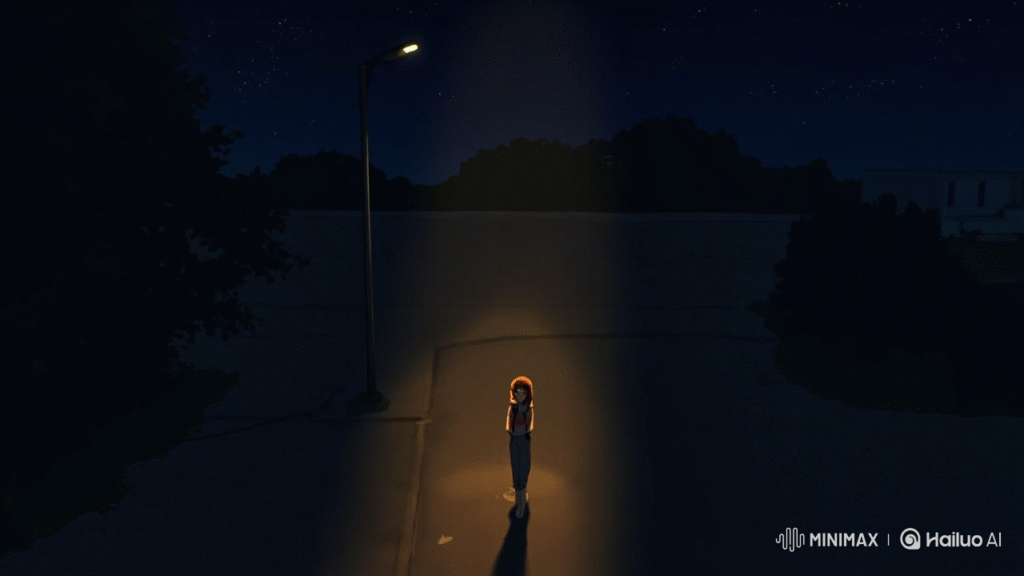
Priya had always been the quiet one agreeable, accommodating, smiling even when it hurt. In her relationship with Arjun, she thought she’d found love. He was charming, smart, and always said the right things.
At first.
Slowly, his words became barbed. He controlled her clothes. Mocked her choices. Kept her from friends. But he never hit her so she convinced herself it wasn’t abuse.
Then one night, after an argument over nothing, he threw a glass. It shattered inches from her face.
She sat frozen.
He apologized. Said it would never happen again.
But something in Priya broke open. Not from fear, but clarity.
She grabbed her purse, stepped into the night, and didn’t go home.
She stayed with a friend. Called a hotline. Found a therapist. For the first time in years, she looked in the mirror and didn’t see shame she saw strength.
It took months to undo what he’d planted: that she was too sensitive, too dramatic, too much.
Now, she was learning: she was enough. Entirely enough.
One year later, she volunteered at a women’s center. She didn’t tell her story often but when she did, it helped someone find their own courage.
Priya had walked through fire but she walked out stronger.
4. Integration (Adulthood and Beyond)
We begin to integrate our experiences, accepting both the light and shadow parts of ourselves. We become more comfortable in our skin, make peace with our past, and align our actions with our values.
1. “The Quiet Return of Eleanor Wade”
Theme: Returning to Roots & Reclaiming Self in Late Adulthood
Character Age: 68

Eleanor Wade had left her childhood town forty years ago, vowing never to return. She had built a life elsewhere New York fashion shows, high-rise apartments, and lonely holidays spent with colleagues. She was once the talk of her design world, known for her sharp eye and sharper tongue.
But when her sister died, Eleanor had no choice but to return to Dunridge, a sleepy little town now more faded than she remembered. The house she inherited still smelled faintly of cedar and old paperbacks.
At first, Eleanor planned to sell it quickly. But something changed the night she opened a forgotten attic box. Inside were childhood drawings, her mother’s needlework, letters from her high school art teacher who once told her: “You are more than your ambition. You are your tenderness too.”
Those words unsettled something long buried.
Over weeks, Eleanor walked the town. The librarian still remembered her. A woman she once bullied forgave her. She even helped start an art class at the local community center.
One day, a child asked, “Were you always this nice?”
Eleanor smiled. “Not always. But I’m trying.”
In the mirror, she no longer saw the glamorous designer from magazines. She saw someone fuller someone real. And for the first time, Eleanor Wade decided she was finally home.
2. “Naveed’s Garden”
Theme: Integrating Faith, Fatherhood, and Forgiveness
Character Age: 45

For most of his adult life, Naveed kept his head down. An immigrant father of three, he worked sixteen-hour shifts at a convenience store, rarely taking a day off. He didn’t complain. Providing for his family was enough.
But when his oldest son, Arman, got into a fight and was suspended from school, something snapped. Naveed lectured him harshly, invoking rules, respect, and shame. Arman yelled back, “You don’t even know me.”
That night, Naveed sat in the garden behind their house a patch of soil he never had time to tend. He remembered his own father’s rigid hands, the belt, the prayers, the silence. He didn’t want that cycle.
He began digging, planting, watering not just flowers, but memory. Every morning, he invited Arman to help. At first, the boy refused. But after a while, curiosity won. They worked side by side, in sweat and soil, often in silence.
One day, Naveed told Arman about the war he fled, about losing his brother, about feeling unworthy to dream.
Arman listened, then cried.
That spring, their garden bloomed in wild color roses, tulips, herbs from Pakistan. Naveed began writing poetry. He started attending therapy. And for the first time, he prayed not out of fear, but love.
In those petals, Naveed wove past, present, and future into peace.
3. “What Miriam Left Behind”
Theme: Reconciling Motherhood, Loss, and Passion
Character Age: 59
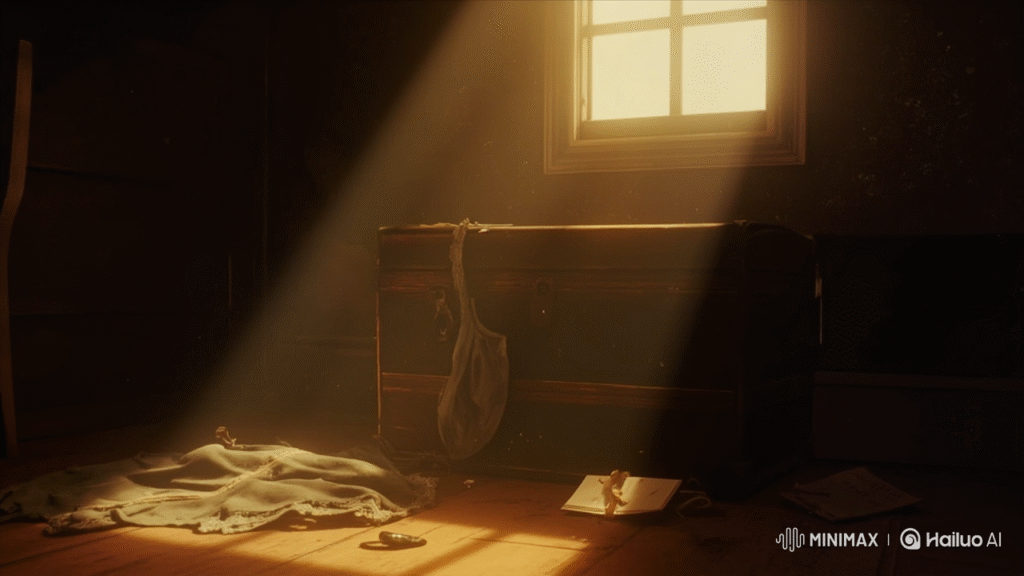
When Miriam’s youngest daughter moved out, she was left with silence and regret.
She had spent thirty-five years as a mother, wife, caretaker. Her own dreams of becoming a writer were shelved in favor of diapers, grocery lists, and long nights with feverish kids.
Now the house was quiet. Her husband read newspapers and mowed lawns, but they barely spoke anymore.
One day, Miriam found an old flash drive. It contained half-written stories romance, magical realism, political thrillers all bursting with life.
She cried for hours.
Then she wrote. And wrote. Her first piece a story about a woman who sews emotions into quilts got published in a local magazine. She joined a writer’s circle. For the first time in decades, she introduced herself not as someone’s mother or wife, but as Miriam: writer.
When her daughter visited and found her manuscript, she said, “You wrote all this while raising us?”
Miriam laughed softly. “I’ve always been writing even when no one was reading.”
As her words filled the world, so did a deep, unshakable truth: she had not lost herself in motherhood she had simply waited to bloom in her own time.
4. “The Man Who Changed His Name”
Theme: Identity Integration After a Lifetime of Hiding
Character Age: 52
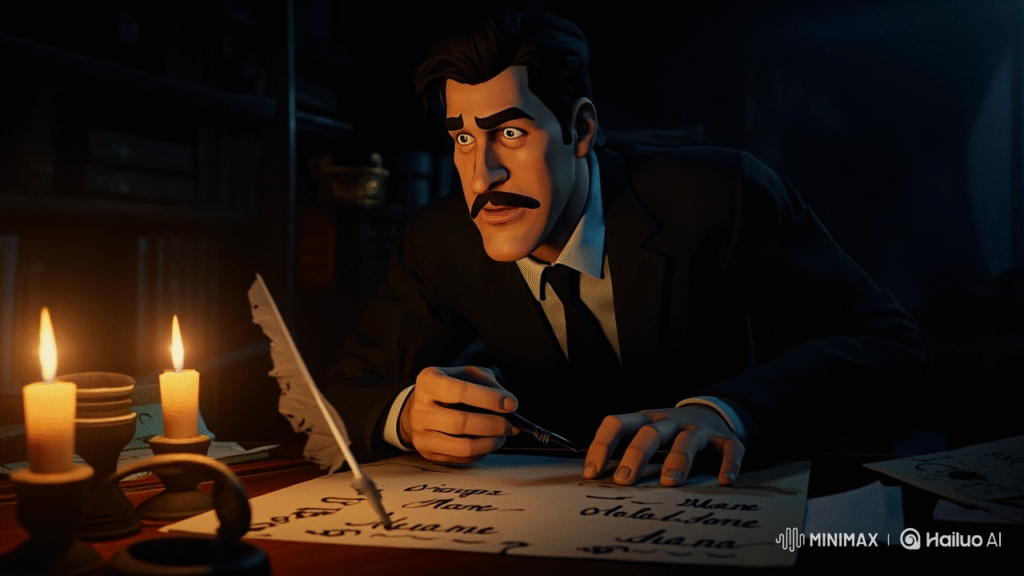
John Thomas had lived a safe life. Church every Sunday. Married at twenty-two. Two children. A mortgage. A corporate job.
But John was not his real name. Born Jonah Taylor, he changed his name in college after cutting ties with his mother, who was a drag performer and activist. Her life embarrassed him. He wanted “normal.”
Years later, after his children had left and his marriage crumbled, he found a dusty box in the garage. Inside were photos of his mother bold, proud, unapologetic. Letters she had written, unsent. One said: “I hope you live out loud one day, even if it’s not with me.”
Jonah wept.
He changed his name back legally. He dyed his hair bright red for the first time in thirty years. He started attending LGBTQ+ storytelling nights.
One night, he told his mother’s story, tears trembling in his voice. The crowd applauded for minutes. Someone from the audience whispered, “Thank you for not erasing her.”
In honoring her truth, he finally accepted his own: that he had been hiding not just from her but from the wild, creative soul inside him.
He wasn’t just Jonah. He was his mother’s son.
5. “The Patchwork Wall of Luis Hernandez”
Theme: Embracing Legacy, Community, and Aging with Pride
Character Age: 72
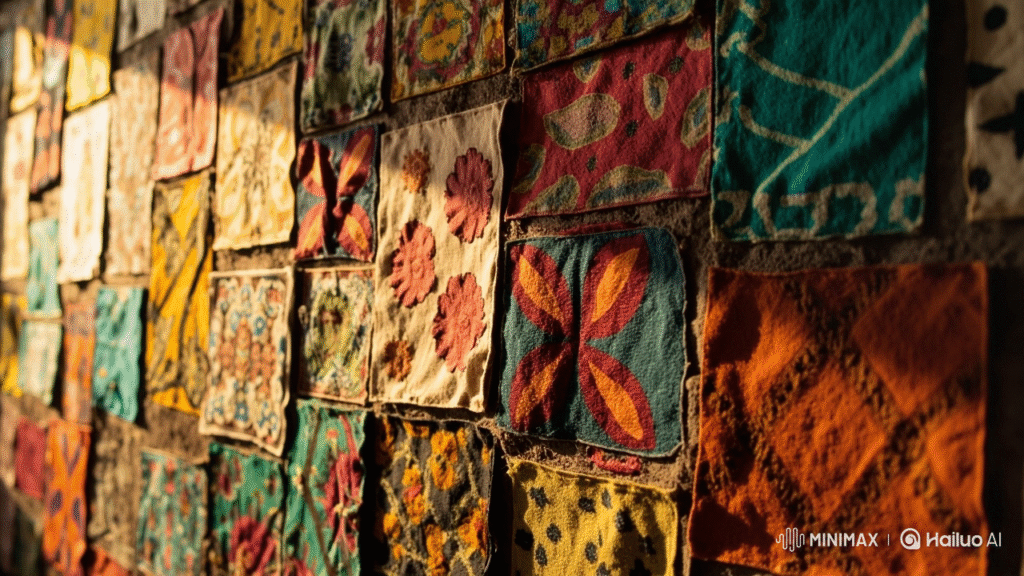
Luis Hernandez had been a carpenter all his life quiet hands, loud heart. His walls, chairs, and cabinets lived in every home on his block. But when his arthritis worsened and he stopped working, he began feeling invisible.
“What’s the point now?” he told his granddaughter one day.
She gave him an idea.
With her help, Luis began building something different: a giant community mural. But instead of paint, it was made of small wooden panels each one decorated by a family he had built for. He delivered the panels to homes, asking them to paint memories, messages, photos.
The mural grew.
Neighbors who hadn’t spoken in years came together to add pieces. One showed a baby’s first steps. Another was a wedding photo. One panel read: “Luis made this table where we became a family.”
The finished wall spanned thirty feet. At its center, someone painted Luis himself, surrounded by tools and love.
The day it was unveiled, Luis stood before it, hands trembling. He saw not just wood and paint, but his whole life reflected back every nail, every joke, every hug.
In giving his craft, he had given himself. And now, he saw: that was enough.
What Shapes Our Identity?
Identity is not just something we are born with it’s something we co-create with the world around us.
• Family and Culture:
The values, traditions, and stories we inherit from our families and cultures deeply impact who we are.
1. “The Taste of Home”
Theme: Rediscovering Cultural Roots Through Food
Character: Aanya, 28, second-generation immigrant in Canada
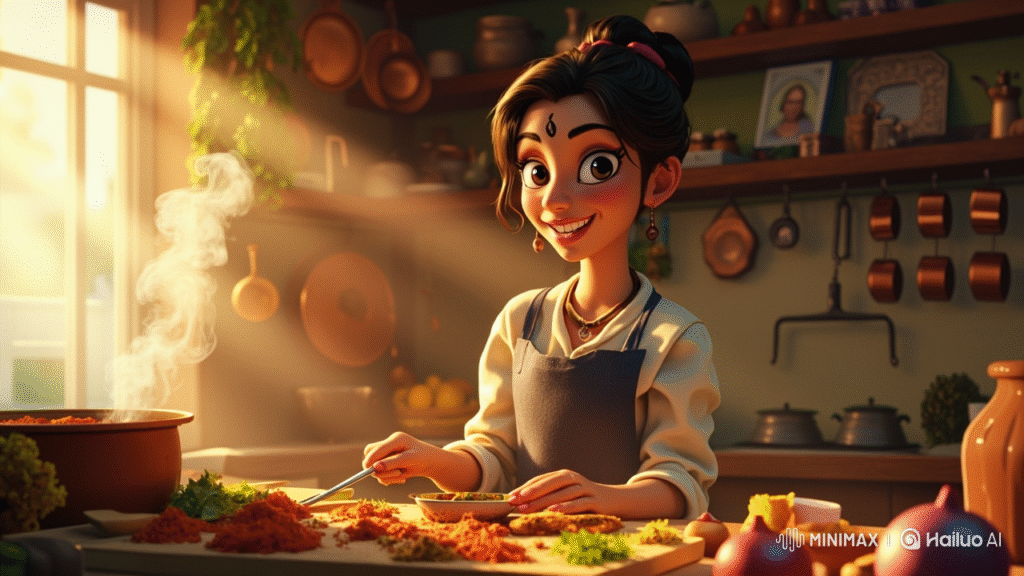
Story:
Aanya had grown up in Toronto, where her Indian roots were mostly observed during weddings and festivals. At home, she ate pizza more often than parathas, and her parents spoke English with only traces of their Gujarati accent. Her mother occasionally made traditional food on birthdays or Diwali but Aanya never paid much attention.
After her mother passed away suddenly from a heart condition, grief carved silence into their home. Her father grew even quieter. Aanya, now living alone in her downtown apartment, found herself craving something but she didn’t know what.
One cold evening, she opened her mother’s kitchen drawer and discovered a small, worn notebook labeled “My Spice Stories.” Inside were recipes not just ingredients, but stories. “This is the dal I made the night you were born.” “This is Nani’s biryani that cured Papa’s homesickness.” “This is how you liked your roti—soft, slightly burnt on the edges.”
Something inside her stirred. Aanya began cooking. Not smoothly she burned the first curry and used too much cumin. But soon, her kitchen began to smell like the house she grew up in. As she stirred the lentils, she wept.
Months later, she started a blog called “The Taste of Home,” sharing her mother’s recipes and stories. It became popular among second-generation kids around the world. And in blending spices, Aanya reconnected not only with her mother but with herself.
2. “The Forbidden Song”
Theme: Preserving cultural art against modern resistance
Character: Jamil, 22, Pakistani-American, aspiring musician
Story:
Jamil loved music not qawwalis or folk songs, but rap and R&B. He grew up idolizing Jay-Z, Kendrick Lamar, and tried to produce his own beats on GarageBand. His father, however, disapproved. “Music is not a future,” he’d say. “Especially not this noise.”
But one summer, Jamil was sent to Pakistan to stay with his grandfather in Multan. He was furious. There was no Wi-Fi. No Spotify. No clubs.
One night, he heard a haunting voice echoing from the courtyard. It was his Dada Abu, sitting cross-legged, singing a Sufi song into the night. The words were unfamiliar but the emotion pulled at Jamil’s chest like a memory he’d never lived.
Over time, his grandfather explained the poetry behind the music verses from Rumi and Bulleh Shah, layered with metaphors about the soul, rebellion, and divine love. Jamil recorded these sessions secretly. He later fused the recordings with hip-hop beats and shared them online as “Soul Splice.”
It went viral.
When he showed his father the views and the comments some even from Pakistan his father remained quiet for a long time. Then, he whispered, “Your Dada would be proud.”
Jamil didn’t stop making music. But now, he made it in two languages with two hearts.
3. “The Quilt of Names”
Theme: Healing through intergenerational storytelling
Character: Evelyn, 35, African-American, community historian

Story:
Evelyn was always the quiet one at family gatherings. She worked as a museum archivist in Georgia and preferred dusty records to conversations. Her grandmother, Mama Ruth, had once been the neighborhood griot a storyteller who kept the community’s memories alive.
But as Mama Ruth aged, dementia stole her words.
One afternoon, Evelyn sat with her in the sunroom and asked softly, “Tell me about your mother.” Mama Ruth stared blankly.
So Evelyn tried another way. She brought fabric bright African prints, old denim, worn cotton from family shirts. As she laid them out, Mama Ruth touched each one and mumbled names “Clara… Baby Jo… Reverend Miles.”
A week later, Evelyn started stitching a quilt each patch labeled with a name, a memory. Slowly, the quilt became a family tree woven in thread.
At the next family reunion, she unveiled it.
Everyone cried.
And when Mama Ruth touched it, she smiled truly smiled for the first time in months.
Evelyn realized she wasn’t just archiving history. She was living it.
4. “The Last Dance at Temple Hill”
Theme: Bridging Generational Gaps Through Rituals
Character: Leo, 17, Filipino-American
Story:

Leo hated Sundays. That’s when his family would drag him up to Temple Hill a patch of sacred land where his grandfather and other elders performed dances, prayers, and rituals that felt… embarrassing.
He didn’t speak Tagalog. He didn’t like how other kids teased him about “worshiping sticks and trees.” So one day, he refused to go. He stayed home and played video games.
That same evening, his grandfather collapsed during a ceremony. He passed away two days later.
Leo was devastated and ashamed.
While going through his grandfather’s things, Leo found an old DVD labeled “Temple Hill Legacy.” It was a documentary his grandfather had tried to make with subtitles and interviews in English, aimed at the younger generation. But no one had ever finished editing it.
Leo decided to try.
In the process, he watched every clip, every ritual, every chant. He began to understand. The dances weren’t just “old stuff” they were stories of survival, migration, and prayer.
He finished the documentary and uploaded it to YouTube. It went viral in Filipino communities across the world.
That summer, Leo returned to Temple Hill. He danced.
5. “The Name She Chose”
Theme: Reclaiming cultural identity and agency
Character: Layla, 30, Iranian-American lawyer

Story:
At age 10, Layla had begged her teacher to call her “Lily.” Her Persian name, she said, was too hard to pronounce. From then on, she was Lily everywhere at school, in college, at law firms. Only her parents still called her Layla.
Years passed. She became a successful immigration attorney, often representing Middle Eastern clients. But she always introduced herself as Lily.
One day, she took on a case involving a young Afghan girl named Mahnoor, who was being bullied at school for her name. Mahnoor asked her, “Did you ever have a name you didn’t like?”
Layla froze.
That night, she sat with her father. “Why did you name me Layla?” she asked.
He smiled and recited a line from a Persian poem:
“For Layla, the moon stopped in the sky. For her, even madness became divine.”
She wept.
The next day, she entered the courtroom and said, “I’m Layla Farzaneh, representing the client.”
From that day on, her email signature changed. Her nameplate changed. Her voice changed.
And Mahnoor smiled when she saw it.
• Gender and Sexuality:
Understanding and expressing our gender identity and sexual orientation is a crucial part of many people’s journeys.
1. “The Name on the Tag” A Journey of Transition and Truth
Character: Zayan (he/him)
Age: 19
Setting: Small town, conservative family, university city
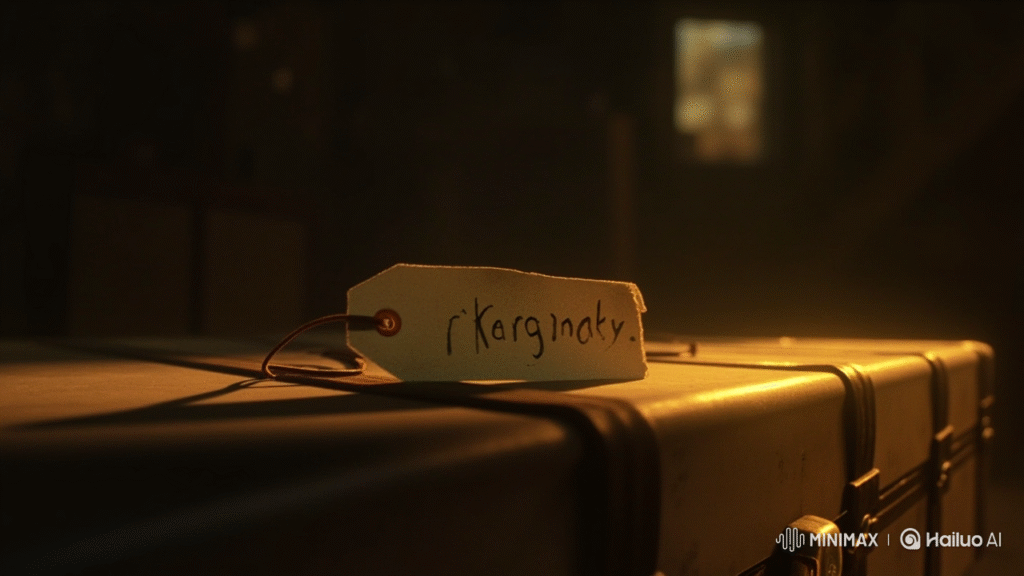
Story:
Zayan was born Zara. For 19 years, he carried a name that never felt like his own. Every school attendance call felt like a bruise. Every time someone said “young lady,” it scraped against something deep and silent inside him.
He moved to the city for university, carrying a secret like a stone in his chest. In lecture halls, he wore hoodies, kept his voice low, and avoided questions about his past.
One afternoon, he passed by the campus queer center and paused at the doorway. A poster read: “Your truth is not too loud. Come in.”
Zayan stepped in.
That room changed everything.
He met others some already on their gender journeys, others just beginning. Slowly, he started using his chosen name. One day, during a campus conference, he nervously pinned a name tag to his shirt: “Zayan (he/him)”.
Later, an older student whispered, “I like your name.” Zayan smiled. That tag felt heavier than any ID he ever carried but it also felt real.
The hardest part was telling his parents. The call was shaky, full of silence. His mother cried. His father didn’t speak for days.
But Zayan didn’t regret it. He had finally stepped into himself and that, he realized, was the most honest thing he had ever done.
2. “The Pink T-Shirt” Breaking Boyhood Rules
Character: Ayaan, Age 10
Setting: School in Pakistan
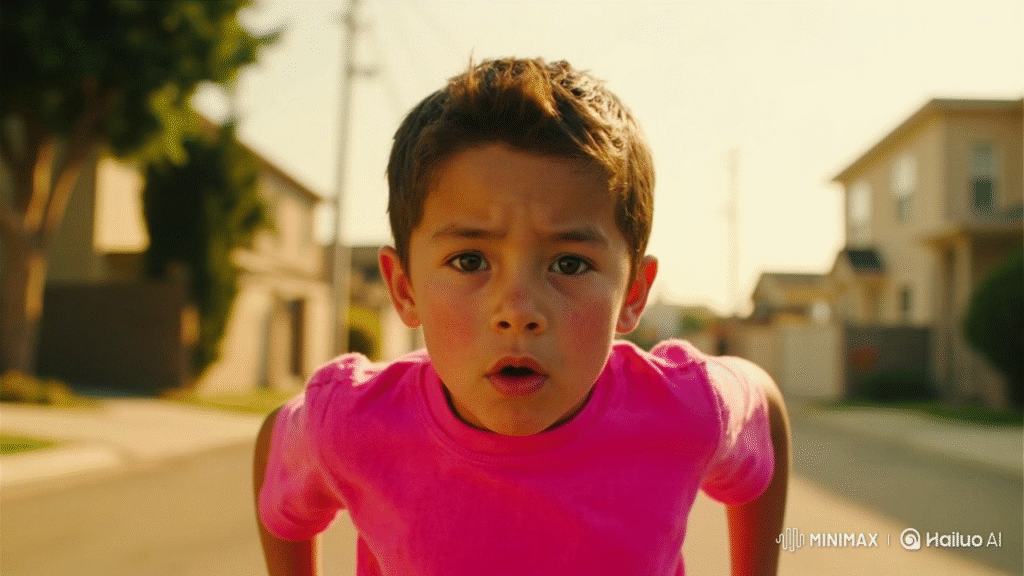
Story:
Ayaan liked drawing flowers. He liked glitter glue. He liked the color pink.
His classmates didn’t.
Every time he brought his favorite pink t-shirt to school, the teasing began. “Are you a girl now?” “That’s not for boys.” He stopped wearing it. He started hiding his drawings. He laughed at jokes he didn’t like.
One day, while cleaning out the attic with his mother, he found an old box of pictures. Inside was a photo of his father age 9 wearing a pink shirt.
“I wore that all the time,” his father said. “It was your Dadi’s favorite color.”
Ayaan stared. “But… everyone says it’s a girl color.”
His father frowned. “Colors don’t have genders, beta. People just put limits where they shouldn’t.”
The next Monday, Ayaan wore his pink shirt. He braced for laughter but when it came, he didn’t flinch.
“You look weird,” someone sneered.
“I look like me,” Ayaan said.
From that day, his art got brighter. His voice got stronger. And he kept that photo of his father in his school bag a quiet reminder that being different doesn’t mean being wrong.
3. “A Mirror Between Two Worlds” Navigating Bisexuality in a Binary Culture
Character: Leena, Age 22
Setting: Urban apartment, Indian-American family

Story:
Leena always thought love came in clear boxes: you’re either gay or straight, boy meets girl, end of story.
But her heart never played by those rules.
In high school, she had crushes on both girls and boys. She pushed the feelings down. In college, when she dated a guy, people smiled in approval. But when she fell in love with a girl named Sara sunlight in human form everything got complicated.
Leena’s parents found out through a cousin. One evening, her father asked, “Is this a phase?”
She wanted to scream. Instead, she whispered, “It’s who I am.”
Sara didn’t last forever. But the truth did.
Leena stood in front of her bathroom mirror months later new haircut, old sari, eyeliner bold.
“I am not half of anything,” she said aloud. “I am whole in every direction.”
When she visited her parents during Diwali, she noticed something: her mother had placed a photo of Leena and Sara on the mantel not hidden. Not erased.
It was a beginning. Not perfect, but real.
4. “The Closet in Room 207” Growing Up Gay in a Boys’ Hostel
Character: Bilal, Age 17
Setting: Boarding school in Lahore
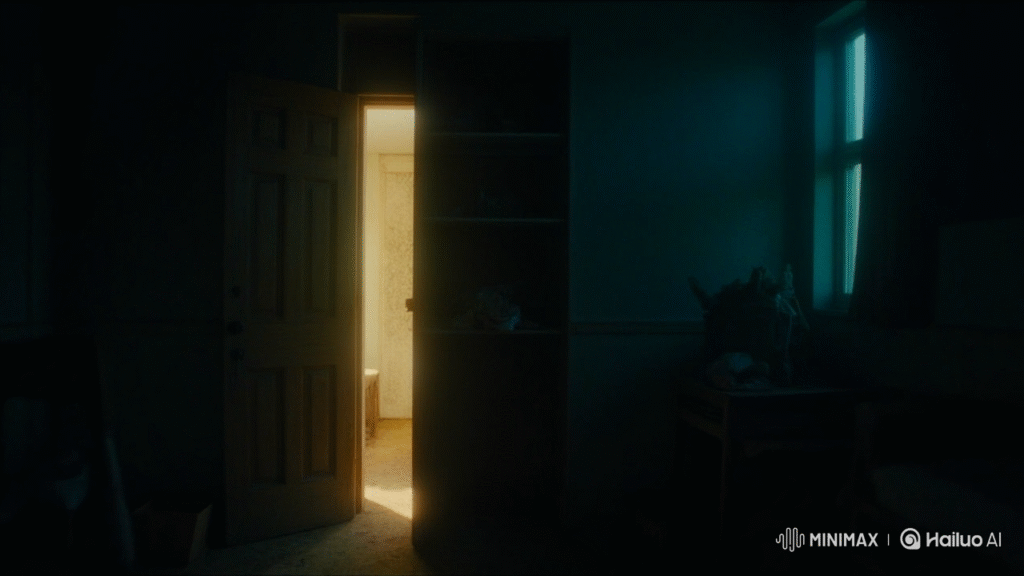
Story:
Room 207 was where Bilal first realized that secrets take up space.
He was smart, quiet, loved poetry, and had no interest in the locker-room talk the other boys shared. When he caught himself staring at Omar from the cricket team, he felt both wonder and terror.
He searched forums at night. “Is it normal to like boys?”
The answer varied, but his heartbeat didn’t. It knew.
He never told anyone until his roommate Faraz caught him doodling a sketch of Omar. There was silence. Bilal braced for the insult, the punch, the exile.
But Faraz said, “You’re brave, yaar. I don’t think I could tell anyone if I liked someone that much.”
It wasn’t acceptance. Not fully. But it wasn’t hate either.
Years later, when Bilal became a literature professor, he remembered Room 207. That tiny dorm closet wasn’t where he came out but it was where he began.
5. “She Who Dances” A Trans Woman’s Fight for Joy
Character: Reema, Age 34
Setting: Small village in Bangladesh, then Dhaka

Story:
Reema was born Rafique. As a child, she was drawn to bangles, ghungroos, and dancing in secret while her mother cooked.
Her father beat it out of her or tried to. “Be a man,” he shouted. So Reema hid.
She ran away at 16 to Dhaka, where she found shelter with a hijra community. There, she learned what her identity meant not shame, but sacredness. She renamed herself. She learned Kathak. She saved money for surgery.
People mocked. Some threw stones. Others gawked. But she kept dancing.
At 34, Reema was invited to perform at a national event her biggest stage yet. The lights rose. Music began. She danced not just with feet but with every piece of pain she’d carried.
When she finished, the applause didn’t just echo it healed.
In the crowd, her mother wept silently.
After the performance, her mother whispered, “I lost a son, but maybe I found my daughter.”
• Race and Ethnicity:
Our racial and ethnic identities influence how we see ourselves and how others see us in the world.
1. “The Color of Jasmine”
Character: Layla, Age 16
Setting: A suburban high school in the U.S.
Theme: Reconciling identity between two worlds

Story:
Layla always felt like she lived in two countries at once America, where she was born, and Pakistan, where her heart quietly beat in rhythm with stories her Nani (grandmother) told. At school, Layla wore jeans and hoodies. At home, she twirled in shalwar kameez, learning to make parathas with her mother and read Urdu poetry with her father.
But every time she spoke her native language in public, she felt the stares. One afternoon, in the cafeteria, a classmate mimicked her accent while she was FaceTiming her mom. “This is America, speak English!” the girl snapped. Layla froze. The moment spiraled into humiliation, her voice stuck in her throat.
That night, Layla cried into her pillow. The next day, she didn’t speak Urdu at school.
Weeks passed. Then came Culture Week. Each student was asked to present their heritage. Layla almost skipped her turn. But at the last moment, something shifted. She walked onstage wearing her Nani’s jasmine-perfumed dupatta. Her slideshow included poetry from Faiz, recipes from her mother, and her story of living between two worlds.
By the end, the room was silent not out of discomfort, but awe. Her teacher wiped away a tear.
From that moment on, Layla stopped hiding. Her accent didn’t define her it was just another language in her beautiful, bilingual soul.
2. “Skin Like Earth, Voice Like Thunder”
Character: Jeremiah, Age 18
Setting: A small southern town
Theme: Fighting racism and reclaiming ancestral pride

Story:
Jeremiah had grown up knowing how to be quiet in white spaces. His mama taught him how to move politely through stores, to keep his hands out of his hoodie pockets, and never, ever talk back to authority.
But he had questions. Why were the books about slavery only one chapter long? Why did the town celebrate Confederate heroes but ignore Black leaders? Why did he feel like he was walking on eggshells every time he spoke with teachers?
It all came to a boil when the school refused to allow a Black History Month assembly. Jeremiah led a petition. Then came the backlash anonymous notes in his locker, teachers giving him extra homework, even his friends pulling away.
But Jeremiah kept going. He read Baldwin and Angelou and Malcolm X. He joined a community group and learned his family’s history his great-great-grandfather had led a freedmen’s school after the Civil War.
At the school board meeting, Jeremiah stood and gave a fiery speech about erasure, pride, and power. His voice trembled, but it didn’t crack. When he finished, there was a pause. Then applause.
The assembly was approved. But more importantly, Jeremiah knew he had changed not just the system, but himself. He wasn’t small. He wasn’t invisible. He was thunder in human form.
3. “The Missing Accent”
Character: Sofia, Age 21
Setting: University campus in Toronto
Theme: Language loss and rediscovery of Latina identity

Story:
Sofia was born in Venezuela but left when she was four. Her parents, in their pursuit of a better future, stopped speaking Spanish at home. “We want you to succeed here,” they said.
So Sofia became fluent in English and slowly forgot her Spanish.
At university, she joined a Latinx cultural club. The first meeting felt warm but unfamiliar. People danced to reggaetón, greeted each other with rolling R’s and affectionate Spanish slang. Sofia smiled, but stayed quiet.
Someone asked her, “Where are you from?”
She said, “Venezuela well, sort of. I don’t speak Spanish.”
There was a pause. “You’re still one of us,” they replied.
But she didn’t feel it. Until one night, after a club event, she found an old cassette tape from her grandmother. On it was a lullaby in Spanish and her name whispered with love. She cried for everything she had forgotten.
The next morning, she enrolled in beginner Spanish. Every word felt like a homecoming.
It took time, but slowly, Sofia rebuilt the bridge between who she was and who she could become. Her accent was imperfect, but her pride was whole.
4. “Bamboo Shadows on White Walls”
Character: Kai Wen, Age 27
Setting: San Francisco, working in tech
Theme: The pressure of assimilation in professional life

Story:
Kai Wen had always known the “code.” In every job interview, he used his Anglicized name, “Kevin.” He wore Western suits, kept his Mandarin skills to himself, and learned how to laugh at jokes that made him cringe.
As a top software engineer, he was successful on paper.
But something inside felt hollow. At work, people mocked Chinese food smells in the breakroom. When he spoke up, they said, “Relax. It’s just a joke.”
One day, during Lunar New Year, Kai Wen brought red envelopes for his team with candies inside. One colleague scoffed, “What is this, fortune cookie nonsense?”
Kai Wen laughed it off but that night, he went to Chinatown and walked alone under red lanterns, remembering his mother’s dumplings and how she called him “小文 (Xiǎo Wén)” with pride.
That weekend, he started a company diversity initiative focused on cultural inclusion. He gave a presentation in English and Mandarin. He introduced himself as Kai Wen.
The journey wasn’t easy. But each step was a reclaiming of power.
He wasn’t Kevin anymore. He was Kai Wen, son of scholars, descendant of strength and finally, seen.
5. “Braided Roots”
Character: Aaliyah, Age 30
Setting: A multicultural city in South Africa
Theme: Mixed-race identity and belonging

Story:
Aaliyah was born to a Zulu mother and Indian father two cultures rich with history, rhythm, and pain. Her skin was coffee-brown, her features a blend that turned heads and raised questions: “What are you?” “Where are you really from?”
As a child, she braided her hair with her aunties and ate biryani at family weddings. But she never felt fully accepted by either side. Zulu cousins teased her for being “too light,” while Indian relatives called her “half blood.”
She learned to shrink to become neutral, agreeable, quiet.
In her thirties, working as a museum curator, Aaliyah began researching hybrid identities across Africa. She uncovered journals from the early 1900s stories of love between cultures, of revolution, of music that fused traditions.
One artifact stood out: a worn photograph of a mixed-race family, proud and unashamed. It looked like her family. She wept.
Aaliyah launched an exhibit titled “Braided Roots,” featuring portraits, poems, and oral histories of blended identities. She even included her own story.
At the opening, she wore a sari wrapped in Zulu beadwork. No more choosing sides. She was the dance between drums and sitars. She was the fusion, the future.
• Experiences and Trauma:
What we go through good or bad can shape our inner narrative and sense of self-worth.
1. “The Silence Between Heartbeats”
Theme: Childhood emotional neglect, silence, and finding voice
Main Character: Ava, age 28
Setting: A quiet coastal town and a therapist’s office

Ava had grown up in a home that was silent in all the wrong ways. Her parents were not cruel, but distant like faded wallpaper in an abandoned house. There were no bedtime stories, no warm hugs. Only the mechanical rhythm of a life built on schedules and muted conversations.
As an adult, Ava found herself unable to connect deeply with others. Her relationships ended the moment someone asked her to “open up.” She couldn’t weeping seemed foreign, anger felt dangerous, and joy was something observed from a distance.
It wasn’t until a panic attack left her breathless in a bookstore aisle that she began therapy. At first, her sessions were filled with awkward silences, but her therapist gently taught her how to listen to the silence between heartbeats the ones where truth often hides.
Ava began journaling, then painting, then volunteering at an orphanage. She realized the children reminded her of herself. Little by little, as she helped them find their voices, she found her own. The silence didn’t leave her life completely, but it no longer controlled her.
Moral: Sometimes the loudest healing comes from listening to what we’ve never dared to say.
2. “The Red Bicycle”
Theme: War trauma, displacement, memory
Main Character: Zain, age 11
Setting: Refugee camp on the Syrian border, then a resettlement town in Canada

Zain’s favorite thing in the world was his red bicycle. Before the war, he would ride through the olive groves outside Aleppo with his sister, Noor, laughing until their cheeks hurt. But one day, the laughter ended. The bombs came. His father vanished. His mother went silent. And Zain was left with memories and nightmares.
They fled across borders, walked miles through mud and barbed wire, slept under open skies with empty stomachs. The bicycle was left behind along with his childhood.
In Canada, Zain was safe but not whole. School was difficult; he barely spoke. But then, one day, his foster parent surprised him with a red bicycle. It wasn’t the same, but the color… the shape… the feeling when he rode it… brought tears to his eyes. He rode it every evening, silently, retracing routes only he knew.
Eventually, Zain joined a refugee storytelling group. One evening, in broken English, he told his story. The room went silent. Someone cried. Someone hugged him. It was the beginning of Zain learning that healing didn’t mean forgetting it meant remembering safely.
Moral: Healing is not the erasure of pain, but the reclaiming of joy, even in small rides.
3. “Glass Skin”
Theme: Self-harm, body image, and resilience
Main Character: Riya, age 17
Setting: Urban high school, hospital ward

Riya was the “perfect” girl honor student, top of the dance team, always smiling. But perfection was her prison. She starved herself of rest, joy, and food. She carved order into her skin with razor blades when things felt out of control. Her body became a battleground no one knew about.
It all came to light when she fainted during a school performance. A teacher saw the cuts while helping her up. Hospital. Therapy. Silence. Her parents didn’t understand. Her friends didn’t know what to say.
But her therapist gave her a mirror not to punish, but to understand. Every week, Riya had to look into it and name one thing she liked about herself. At first, she couldn’t. But slowly, she did: her eyes. Her strength. Her honesty.
One day, she stood on a school stage not to dance, but to speak. She shared her story with trembling hands, then received a standing ovation. Not for bravery, but for truth.
Moral: Scars don’t make you broken they make you real.
4. “Rooms in the Attic”
Theme: Childhood abuse and the long journey to reclaim the self
Main Character: Tomás, age 36
Setting: An abandoned family home and a journal
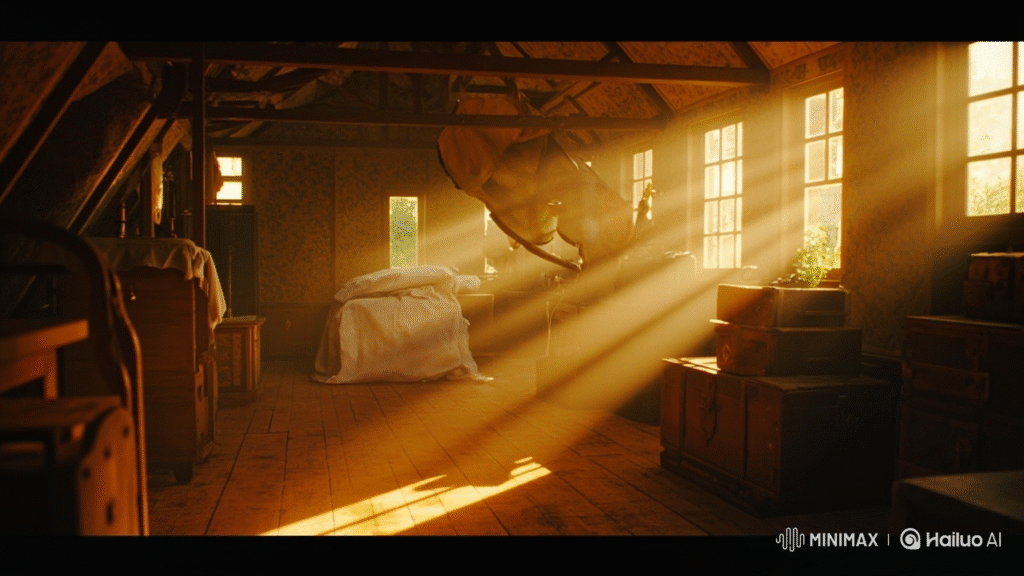
Tomás never went into the attic of his childhood home. It was the one place his father never locked. But he knew better than to hide there he’d be found, punished. As a boy, he would stare at the ceiling, listening to footsteps above, wondering what secrets the attic held.
After his father’s death, Tomás inherited the house. It stood empty for years, but one day, he returned. He walked through each room slowly. The kitchen where his mother cried. The stairs where he had fallen pushed? Forgotten? His chest grew heavy.
Finally, he went up to the attic. Dust. Cobwebs. And in the corner an old trunk. Inside, he found journals. Not his. His mother’s.
In them, she described everything. How she tried to leave. How she stayed “for the children.” How she feared he’d grow up haunted. And her hope that one day he’d forgive himself for surviving.
Tomás wept. For the first time in 30 years, he wept like a boy who no longer had to be brave. Then he wrote his own journal, room by room, memory by memory.
Moral: Sometimes the only way out of a haunted house is to walk through every room.
5. “The Day the Sky Didn’t Break”
Theme: Grief, survivor’s guilt, natural disaster
Main Character: Mia, age 22
Setting: Mountain village destroyed by earthquake

Mia had always loved the mountains. She taught at the little village school barefoot kids, chalkboards, laughter. She was there the day the earthquake came.
In moments, everything crumbled. Dust. Screams. Then silence.
She survived. The kids didn’t.
Mia became a ghost. Back in the city, she withdrew from everyone. People said she was “lucky,” but it didn’t feel like it. She tried to volunteer again but had panic attacks. She couldn’t sleep, couldn’t eat.
One day, a mother from the village found her. She had also survived. She handed Mia a small cloth bag it had a cracked whistle inside. “From Arif,” she said. “He always wanted to be a teacher like you.”
Mia broke down. That night, she looked at the sky. It didn’t break. And somehow, neither did she.
The next month, she returned not to teach, but to rebuild. One wall. One book. One smile at a time.
Moral: Surviving is not betrayal it’s an invitation to keep love alive.
• Passions and Dreams:
The things we love and the dreams we chase also form key pieces of our identity.
1. “The Girl Who Drew Tomorrow”
Theme: Artistic passion vs. expectations
Main Character: Noor, age 19
Setting: Lahore, Pakistan a bustling city full of traditions and tensions

Noor always saw the world in colors others didn’t. Where people saw walls, she saw canvases; where people saw crowds, she saw characters. Her passion was drawing, sketching from life, and telling stories through pencil strokes.
But her family wanted a different future medicine, engineering, law. Art, they said, was “just a hobby.” And so, Noor studied biology by day, and painted secret murals in the abandoned part of her college at night. Her backpack always carried two lives one of textbooks, and one of charcoal sticks and dream journals.
One day, a visiting artist from France discovered her work painted on a half-cracked wall near the campus boiler room. He offered her a chance to showcase in a small exhibit in Paris. Noor’s hands trembled as she hid the invitation in her biology book.
She stayed up for three nights trying to decide. Her heart beat faster every time she imagined the gallery. But then her father found the letter.
An explosive argument. “What will people say?” “We raised you better.” “Dreams don’t feed you.”
Noor didn’t go. For a year, she buried her drawings. Until one day, her little sister found them and posted a few on social media with Noor’s name. It went viral. The world finally saw what Noor saw. The colors, the stories.
This time, when another opportunity came, Noor left quietly just her sketchbook and a one-way ticket. Years later, her father stood in a Paris museum, silent in front of her giant mural titled “Home.” He cried.
Moral: Dreams don’t ask for permission they wait for courage.
2. “The Last Violin”
Theme: Music as healing and dream
Main Character: Elias, age 72
Setting: A quiet village in Austria, shadowed by time and memory

Elias had once been a prodigy at 16, he played for the President of Austria. By 20, he was in Vienna, touring, performing, dreaming of being the greatest violinist in Europe.
Then came the accident. A shattered hand. Nerve damage. Silence.
He became a postal worker, married, lived a good life but a quiet one. His violin lay in a dusty case beneath his bed, untouched for over 50 years.
When his wife passed, Elias was alone. Days melted into one another. But one evening, a letter arrived a local boy named Jakob, age 14, asked if Elias would teach him to play. “I heard you were the best.”
Elias refused at first. But Jakob returned, day after day. His eyes, full of that fire Elias had once known, broke through the old man’s resistance.
They started slowly. Elias could no longer play, but he could teach. The sounds filled his home again wrong notes, giggles, progress. It was as though time had paused, just long enough to remind Elias that the music had never left him it had just changed shape.
Jakob entered a national competition. On stage, he introduced the piece as “The Last Violin” a composition written by Elias, finished by Jakob.
Elias watched from the front row. As the music soared, he wept not for what he lost, but for what he gave.
Moral: Some dreams aren’t meant to be lived they’re meant to be passed on.
3. “The Climber of Paper Mountains”
Theme: Academic dreams vs. poverty
Main Character: Anika, age 16
Setting: A remote village in Nepal, surrounded by Himalayan ranges

Anika was born with mountain air in her lungs and a hunger for books in her soul. Her village had no high school, and no one had ever gone to college. But Anika dreamed of being a writer. Her stories, written on torn scraps and sugar sacks, told of sky dragons and forest queens.
Her father worked as a porter carrying loads for tourists across the ranges. He wanted her to marry young, like her mother. “Books won’t fill your belly,” he said.
Anika secretly climbed five miles every day to a distant school. She read under lanternlight, wrote with a stub pencil, and entered an international essay contest titled “My Dream.” She wrote about a girl climbing mountains made of paper, chased by storms of doubt.
Weeks passed. Then an email. She won.
The prize was a scholarship to study literature in Kathmandu. But her father tore the letter. “You are needed here.”
That night, Anika didn’t sleep. At dawn, she walked to the school and showed her teacher the pieces. The village rallied behind her the first girl to make it past middle school, the one who told stories.
At 18, she gave a TED Talk titled “Climbing Paper Mountains.” At 25, her book was translated into 14 languages.
Every copy was stamped with a quote from her contest-winning essay:
“Even the smallest dream can echo through the tallest peaks.”
Moral: A dream born in silence can one day shake the world.
4. “Painted Wings”
Theme: Dance, gender identity, and freedom
Main Character: Julian, age 23
Setting: Mexico City underground dance scenes and conservative family homes

Julian was born in a house where boys didn’t cry, didn’t wear pink, and certainly didn’t dance ballet.
But Julian danced anyway in the dark, in secret, barefoot on cracked tile floors, mimicking videos on an old phone. Each pirouette was rebellion. Each leap, a prayer.
When he turned 18, he left home, changed cities, and enrolled in a dance conservatory cleaning halls by day, training by night. His body became his truth. His dance, his language.
But trauma followed. Rejection from family. Threats. Isolation. One day, Julian collapsed during a performance. Doctors said stress, dehydration. But Julian knew it was the weight of trying to survive while flying.
A mentor told him: “You’re not just dancing for yourself anymore. You’re dancing for every child who hasn’t yet dared to move.”
So Julian began performing for them. In the underground, he started “Painted Wings” –a ballet troupe of queer dancers of color. They wore colors their childhoods had stolen. They danced stories the world didn’t want to hear.
At 26, Julian performed at the National Theatre dressed in gold, hair wild, spinning like a phoenix.
Backstage, he found a note. From his father:
“I saw you. I didn’t understand. But now I do. You fly.”
Moral: Some dreams don’t just set you free they give others their wings.
5. “Coded Stardust”
Theme: Science fiction dreams and neurodivergence
Main Character: Mira, age 13
Setting: New Jersey suburbs and virtual space labs
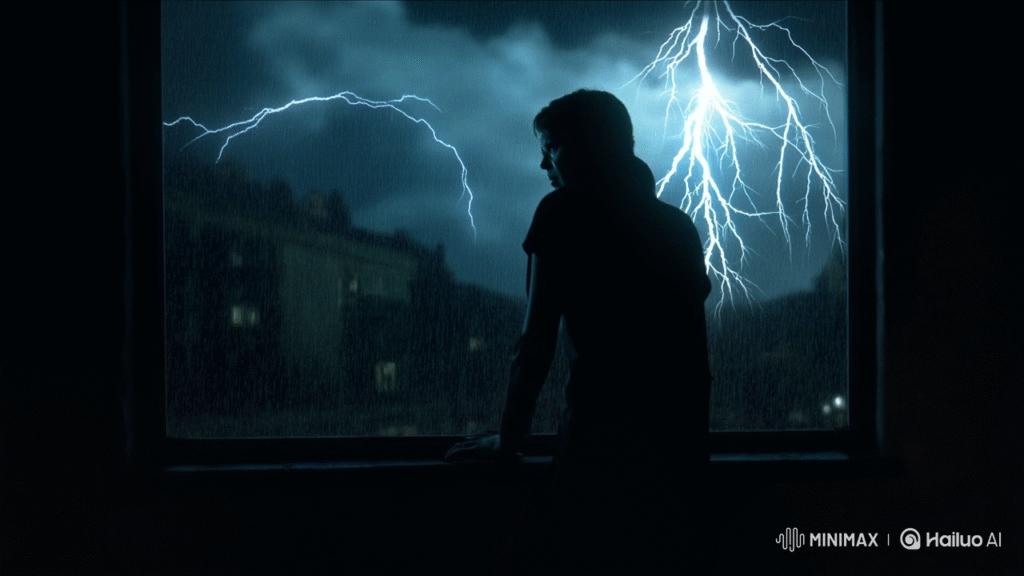
Mira was different and she knew it. Diagnosed with autism at age 8, she didn’t make eye contact, spoke in space metaphors, and memorized star charts like lullabies.
Other kids teased her. Teachers misunderstood her. But Mira didn’t care much she had the cosmos.
Her dream? To be the first neurodivergent astronaut-coder. She built robots out of spoons. Wrote her own coding language at 11. Her room was half telescope, half motherboard.
When her parents enrolled her in a science fair, she created a simulation of a Mars colony complete with AI bots that spoke in Morse code.
The judges laughed. One even asked, “Did someone help you?”
Crushed, Mira locked herself in her room. But online, something sparked. A famous female scientist shared her project on Twitter, saying: “Genius comes in every language even binary.”
Suddenly, Mira was invited to a youth tech summit. She spoke on a panel titled “Neurodiversity and Invention.”
In the crowd was a girl holding a notebook with stars drawn on it. She said, “I talk like you. They told me I couldn’t code. But… I’m here now.”
Mira smiled. “I’ll show you the stars.”
Moral: Dreams are constellations they shine brightest in the dark.
The Challenges of the Journey
The identity journey isn’t always easy. It often involves:
- Conflict: Between who we are and who others want us to be.
- Fear: Of rejection, of being misunderstood, or of changing.
- Loneliness: Especially when we feel like no one understands our evolving self.
- Pressure: From society to fit into boxes male or female, successful or failure, this or that.
But it’s in facing these challenges that we find strength, courage, and self-awareness.
Why the Identity Journey Matters
Understanding your identity is not about boxing yourself in it’s about expanding into your truth.
- It helps you make better choices aligned with your values.
- It improves relationships when you show up authentically.
- It builds confidence and resilience.
- It fosters empathy for others on their own journey.
Tips for Embracing Your Identity Journey
- Practice Self-Reflection: Journaling, therapy, or deep conversations can help you understand your evolving self.
- Be Curious, Not Critical: Questioning your identity isn’t a weakness it’s growth.
- Surround Yourself with Acceptance: Seek people and communities that honor your authentic self.
- Honor Your Story: Every experience, even the painful ones, is part of your becoming.
- Allow Yourself to Evolve: You don’t have to stay the same. Identity is fluid, and change is part of growth.
Conclusion: You Are Becoming
Your identity journey is your own sacred path. It may not always be easy or clear but every step, question, doubt, and discovery brings you closer to the person you are meant to be.
So give yourself permission to evolve. To change. To be uncertain. To seek.
Because identity isn’t just about finding who you are it’s about becoming who you were always meant to be.
Every child goes through an identity journey, where they begin to understand who they are and how they fit into the world. Stories play a powerful role in this process whether it’s through magical adventures or real-life experiences, they help kids see themselves in different lights.
Our detailed guide on identity development stories explores how characters overcome struggles to discover their true selves. For parents and educators looking for research-based insights, the Child Mind Institute’s resource on identity formation is a valuable external guide to support kids on this important journey.

